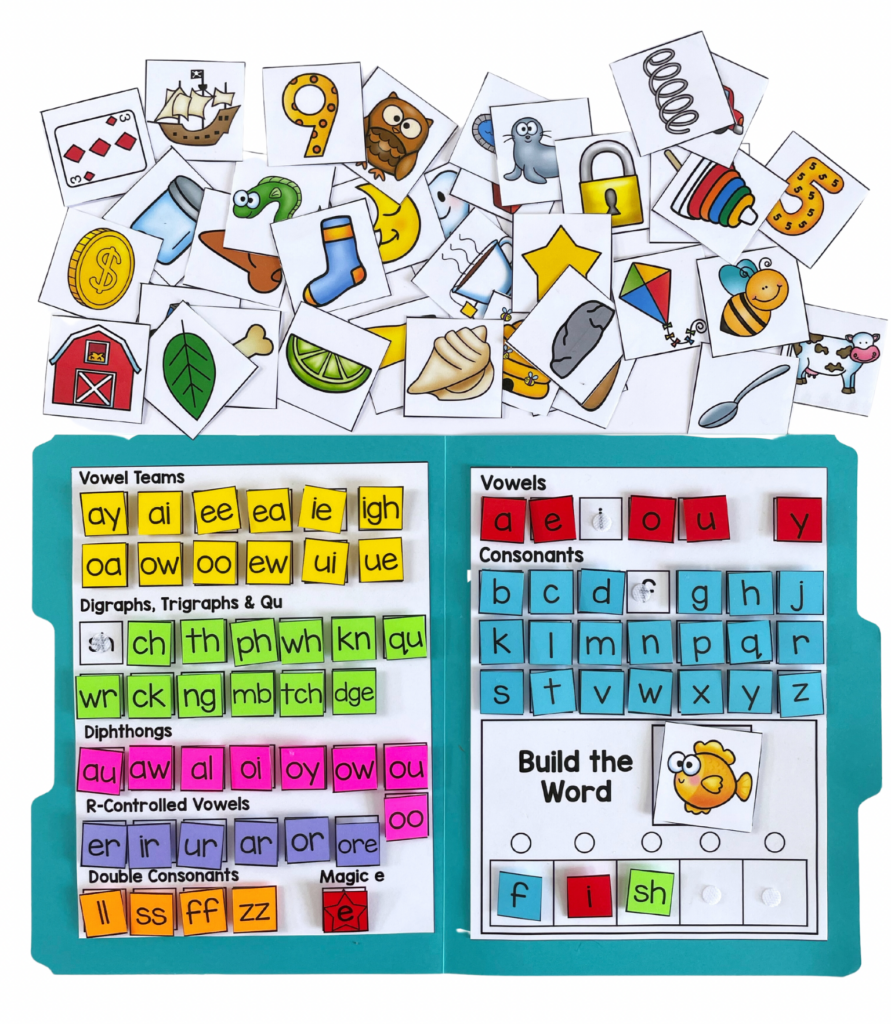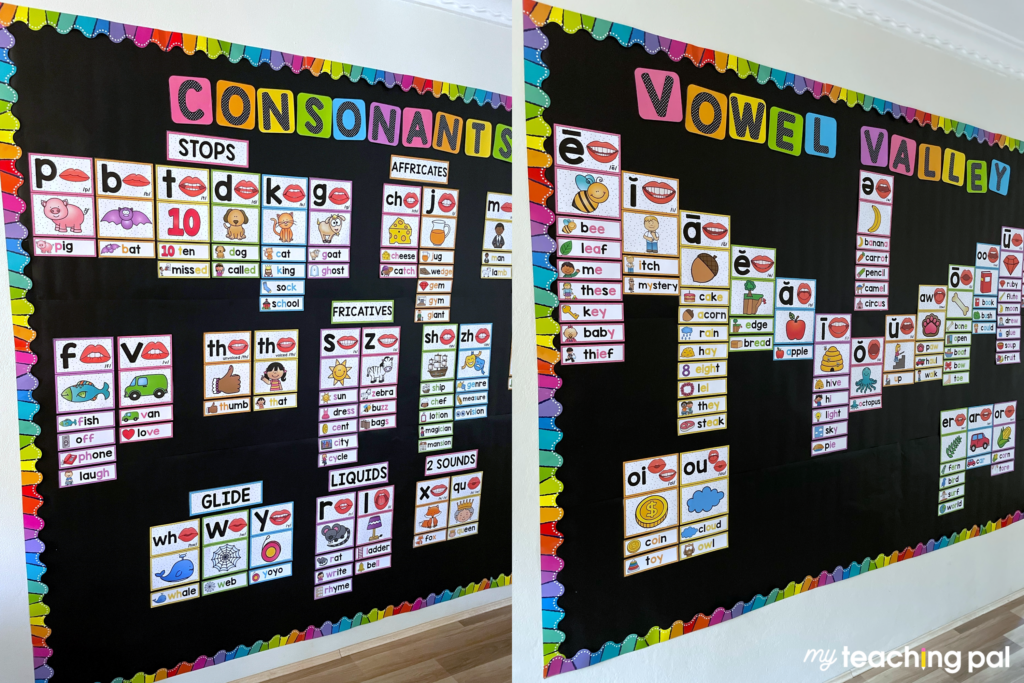
Reading instruction has provoked some of the most contentious debates within the field of Education. For many years, the debate was between Phonics and Whole Language. The pendulum swung wildly between these two extremes for a long time. Now we have more terminology crowding the field, as well as LOTS of research through which to wade.
Let’s see if we can simplify this information. The whole point of reading instruction is to help our students become great readers, right? That’s why we’re here! So let’s clarify a few key terms and discuss the implications of The Science of Reading within the walls of our classrooms.
What is the Science of Reading?
The Science of Reading (SOR) refers to a growing body of research about how people learn to read. The SOR identifies the necessary skills needed for reading, and the most effective methods that should be used to teach these skills.
The teaching practices proposed by the SOR are based upon information from scientific studies, models and theories. One of the key models highlighted by the SOR is known as The Simple View of Reading. The Simple View of Reading was put forth in 1986 and postulates that the whole point of reading is comprehending text. The process of reading comes down to two behaviors: decoding words and comprehending language. Without comprehension, it’s simply not ‘reading’. Here is a graphic depicting The Simple View of Reading:

This model highlights that without word recognition (phonological awareness, decoding and sight recognition) we cannot achieve reading comprehension. Additionally, without language comprehension (background knowledge, vocabulary, language structure, verbal reasoning and literacy knowledge), we also cannot achieve reading comprehension. With reading comprehension being the goal of reading, it is important for educators to focus on both of these components in their reading instruction.
Definitions You Need to Know
Orthographic Mapping – the process of making connections between letters and sounds in reading to allow the reader to decode words and store these words for retrieval in the brain. You can read more about this here.
Phoneme – the smallest unit of speech (‘tap’ has three phonemes: /t/ /a/ /p/).
Grapheme – a written symbol that represents a sound – this could be one letter (o makes a long sound as in ‘home’, as well as a short sound as in ‘hot’), or multiple letters combining together to make a sound (the letters oa together make the long ‘o’ sound)
Phonemic Awareness – the ability to identify and manipulate individual phonemes in spoken words.
Phonics – a method of teaching reading that highlights the relationship between letters and sounds.
Important Learnings from the Science of Reading
As research behind the Science of Reading has changed our minds about the way to teach reading, teaching practices have naturally followed suit. So what’s different? Which instructional strategies are endorsed?
First of all, it’s important to recognize that language (speaking, reading, and writing) is all related. Children learn to speak before they learn to read and write. Spoken language indeed is the foundation on which reading and writing skills are built.
As previously stated, speaking comes naturally to most children. Like most things children learn, they begin speaking by imitating those around them. Reading is different. Reading does not come naturally and must be explicitly taught. While you may have a very small of percentage of students just ‘get it’, the majority of students need explicit, sequential and systematic instruction.
Explicit, Systematic and Sequential Instruction
This phrase is often invoked when talking about teaching phonics – but what does it mean?
Explicit means ‘stated clearly and in detail, leaving no room for confusion and doubt’ (Oxford Languages, 2023). In explicit instruction, information is fully explained to students in clear, direct language. Routines are used to strengthen learning and students are aware of expectations.
Systematic means that there is a system and plan by which to teach letters and sounds. It is an organized and carefully planned approach to teaching reading skills. It involves a structured sequence of teaching phonics, phonemic awareness, vocabulary, fluency, and comprehension strategies. Systematic instruction includes preestablished routines so that students are aware of ‘what is coming.’
Sequential instruction is important because it means that learning can be cumulative – new concepts are built upon old concepts. A good scope and sequence can help ensure that instruction is sequential. It identifies previous concepts taught and which new concepts are to be taught next.
Building on Spoken Language
Building on the verbal skills of the child is important. Start by teaching that the sounds we make are represented by letters. This phonemic awareness will help the child see a relationship between spoken and written words.
Phonics Instruction
An effective reading program that is rooted in research should include systematic phonics instruction that teaches the relationships between letters and sounds. Phonics instruction helps students attain the ‘Word Recognition’ component of The Simple View of Reading model.
Once a child sees the connection between written and spoken language, they can be taught to manipulate letter sounds. This is called blending and segmenting. A reader blending sounds will say that the sounds /a/ + /t/ = at.
Blending sounds is similar to building words, while segmenting sounds can be compared to taking words apart, a child who is segmenting sounds might say that ‘cat’ is made up of the sounds /c/, /a/, and /t/.
This practice of blending and segmenting is integral to the decoding process – but where do we start?
It’s best to begin blending and segmenting using the most common letters as parts of simple words: at, cat, pat, tap, top, etc.
Using an object in blending and segmenting is more effective than teaching it without an object. Elkonin Boxes have been around forever, and can be an important part of this process.
As the student blends the sounds in the boxes, he can use any of the following as a tactile object:
- Small clay balls which get all rolled into one at the end of the word
- Small poker chips or game pieces, which the reader can touch as he says each sound
- Small squares of velcro in front of each letter/sound
As readers improve their segmenting and building skills, they should naturally transition into reading books. It’s best to begin with decodable books, which include easily decodable words like top, pop, hat, cat, etc.
It’s important to note that the old strategies previously given to students when they get stuck on a word (look at the picture, say the first sound, read the sentence and see what makes sense) are not endorsed by Science of Reading.
Rather, the SOR states that reading ‘shouldn’t be a guessing game’, and advises teachers that students who use the strategies of blending and segmenting should be able to solve most of the words they encounter, especially if they are using decodable readers.
Involve the Body!
The SOR approach to teaching reading emphasizes the importance of using a multisensory approach. Multisensory learning is a teaching approach that engages multiple sensory modalities—such as visual, auditory, and tactile—simultaneously in the learning process. Engaging multiple senses enhances memory and learning. When learners experience information through different senses, such as seeing, hearing, and touching, it creates stronger connections in the brain. This leads to improved retention and understanding of the material, which is crucial for building reading skills.
Multisensory learning is also more engaging. You can incorporate snapping, stomping, and clapping as students blend and segment words.
If the word is ‘cat’, simply have the child clap once as he makes each sound. Similarly, the child can snap, stomp, jump, hit a drum, etc. Engagement is key!
Do No Teach ‘Sight Words’
Teaching words by sight alone, without a strong foundation in phonics and decoding skills, is not as effective as incorporating phonics-based instruction. When students learn to recognize words solely by sight, they are only able to read the specific words they have memorized. This approach doesn’t equip them with the skills to decode unfamiliar words. In contrast, a phonics-based approach enables learners to apply their knowledge of letter-sound relationships to read a wider variety of words, including those they haven’t encountered before.
A method commonly used to teach high frequency words is called the heart word method. The heart word method teaches students how to read ‘sight words’ phonetically rather than memorize them. It draws on the theory of orthographic mapping which states that when students break words apart into phonemes/graphemes and then build them back together, long term retention is achieved.
Early Intervention is Key
Identifying and addressing reading difficulties as early as possible is crucial. Early intervention can prevent reading difficulties from becoming more entrenched and can set struggling readers on a path to success.
Science of Reading Tools
Here is a list of tools that can be useful when using an SOR approach to teaching reading:
Sound Walls
A sound wall is a visual classroom educational tool that is used to teach phonics skills to young readers. It helps students understand the relationship between spoken sounds (phonemes) and their corresponding written symbols (graphemes). This fosters a deeper understanding of phonics – the relationship between sounds and letters. When we visually connect sounds to letters, students can develop better decoding and encoding skills, which aid in improved reading, spelling, and overall language development. You can learn more about sound walls here.
Word Building Tool

This word building folder is a tool that you can use consistently throughout the school year. Simply choose the picture cards that meet your targeted focus skill and have students practice encoding the words. This approach to teaching spelling ensures that students receive explicit, tailored practice on specific phonics concepts, thereby deepening their understanding and retention. The design of the activity in itself fosters orthographic mapping which can help students store words in their memory.
The folder includes cards for CVC, CCVC, CVCC words, digraphs, trigraphs, magic e words, vowel teams, diphthongs, double consonants, r-controlled vowels, and even the intricacies of hard/soft ‘g’ and ‘c’.
You can read more about the word building folder here.
Word Mapping Activities

Did you know that encoding (spelling) and decoding (reading) are reciprocally connected, forming a dynamic duo that enhances reading fluency? These foundational skills share a symbiotic relationship crucial for achieving literacy mastery. While they may appear distinct, their interdependence plays a pivotal role in the journey of language development.
Here is a set of activities that you can use that are designed to help promote long term retention of words and sounds. You can read more about them here.
Skills For Life
Reading opens doors – it sounds trite, but it’s absolutely true. To provide students with the skills for success, both personally and professionally – what could be more important? But who’s the lucky one? The student who learns to read, or we, the teachers, who get to give that gift?

















Leave a Comment